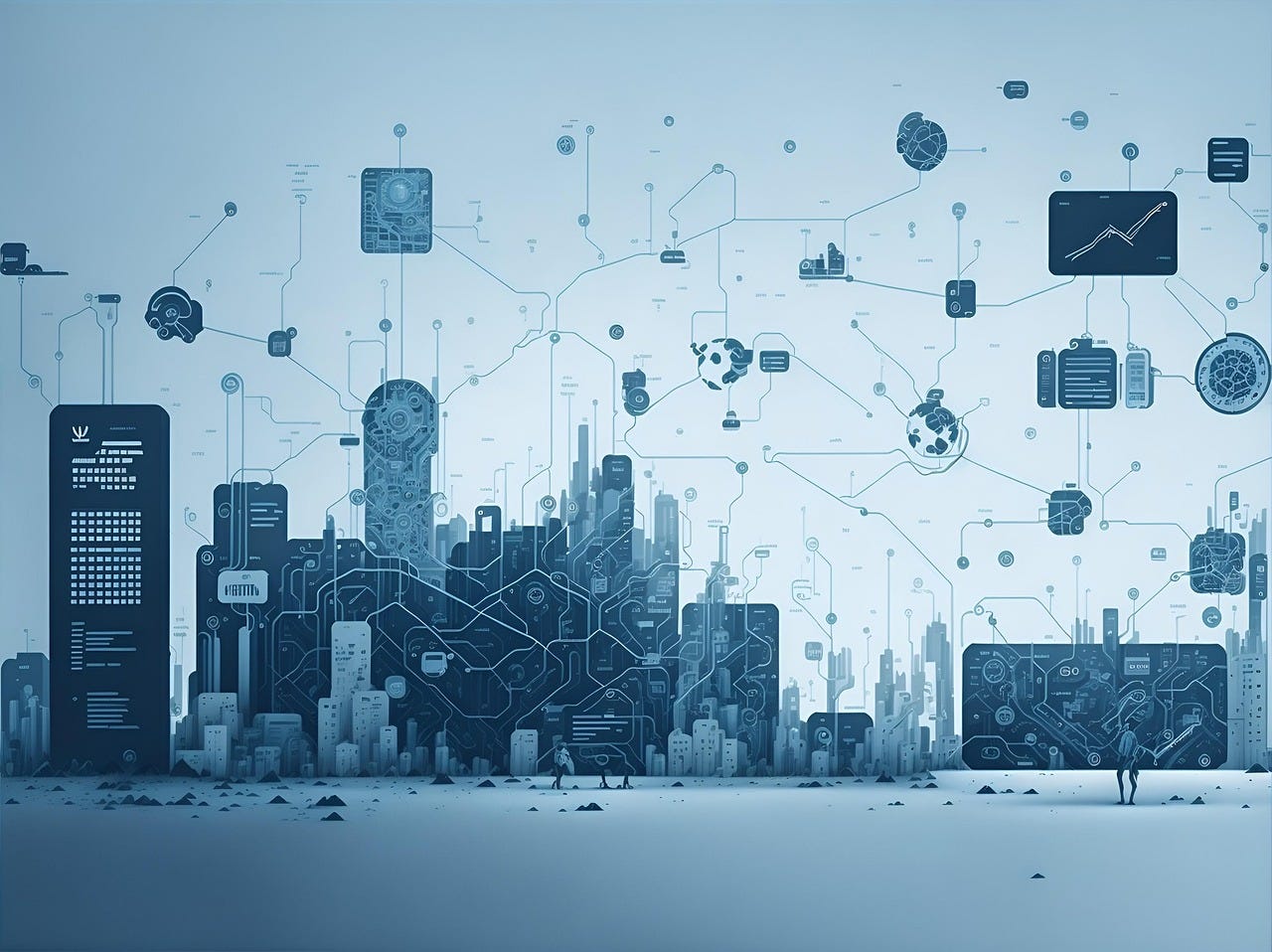Revolutionizing Geospatial Workflows: Agentic AI will Transform the Future of GIS
GIS Dissolves into the Matrix

As GIS/geospatial vendors rush to adopt AI for tasks like scripting, data analysis, feature extraction (GeoAI) and natural language interfaces, the true impact of AI in this industry will become evident when it disrupts and transforms the entire segment.
Modern enterprise systems, largely dominated by ESRI, emphasize the value of an all-in-one solution. It makes it easier for IT and GIS Administrators and purchasing agents. However, this approach comes with significant drawbacks. Built on outdated architecture and overloaded with features that not everyone needs, these systems often become cumbersome, limiting innovation while remaining slow and costly to maintain.
Envision seamlessly integrating GIS and geospatial data, intelligence, and capabilities into any workflow.
With Agentic AI, the system not only understands the problem but also identifies the right tools and applies them intelligently to execute tasks. This concept has long been out of reach due to the challenge of creating workflows smart enough to resolve conflicts caused by ambiguity.
For instance, consider a scenario where three objects share the same coordinates – are they duplicates or distinct features? If they’re duplicates, how should they be resolved? If they’re distinct, what is their relationship?
Another example: during a wildfire, predicting the fire's path can be challenging in a complex environment shaped by wind, terrain, vegetation, firefighting efforts, and other factors. When multiple outcomes are possible, AI will step in to make rapid, well-informed decisions with precision and speed even sending water dropping drones to the exact positions identified in the analysis.
Agentic AI for GIS/Geospatial Applications
Agentic AI offers the potential of powerful capabilities for traditional GIS tasks, including map creation (conflict resolution in annotations, symbology, and color selection), data editing and cleanup, and polygon generation for event perimeters, outage areas, or drive-time analyses. They can optimize routing by determining the fastest, most cost-effective, safest, or eco-friendly paths in a multimodal environment, even when data coverage is uneven.
Additionally, AI excels at pattern recognition such as error detection, identifying issues like duplicates, slivers, or dangles with precision. By leveraging its advanced knowledge, AI can resolve many of the ambiguities that currently require human intervention, streamlining workflows and enhancing efficiency.
Industry-Specific Agentic AI Solutions
Agentic AI tools are highly versatile and can be tailored to meet the needs of specific industries. Applications range from electric utility networks and surface flow modeling to address matching and parcel splitting. They will be used for optimized site selection, redistricting, autonomous vehicles, permitting, streetlight design, and risk assessment. Additionally, these tools can support critical tasks like emergency response, staking sheet generation, and environmental assessments, delivering precision and efficiency across a wide array of industries.
Seamless Data Integration
Agentic AI tools are increasingly being designed to process large datasets and connect various functions, transforming queries into broader GIS operations. However, the true potential lies in reshaping GIS into a network of AI agents equipped with purpose-built models that refine and evolve over time. In this vision, all data types—geospatial and non-geospatial—are seamlessly integrated, eliminating traditional boundaries. The workflow will utilize a diverse range of data sources as needed, including real-time streaming data, documents, big data, surveys, field data, research findings, as well as multimedia content such as audio, video, and images.
To bring this vision to life, GIS and geospatial data will move beyond the outdated 1960s layer-based model. Instead, each feature, object, and concept will be individually managed, modeled, and shared. When tasks involve multiple objects—such as identifying all parcels within a floodplain—AI agents will dynamically retrieve the necessary data to seamlessly execute each step in the workflow.
The Future of GIS and Geospatial Professionals
Traditional siloed GIS workflows will be a thing of the past. Agentic AI excels at making intelligent decisions in workflows that involve multiple options or uncertainty. By learning decision-making parameters and processes, it eliminates the need for GIS and geospatial professionals to handle time-consuming, repetitive tasks, allowing them to focus on more strategic work.
Tasks and outcomes requiring spatiotemporal data and analysis will be seamlessly integrated into Agentic AI-driven processes, delivering faster and more precise results. As this transformation takes place, the role of the GIS Analyst will evolve into a more versatile and dynamic position, playing a key part in building an accurate, interconnected model of the world.
The demand for expertise in spatially connected systems will only continue to grow as these capabilities get adopted. This represents the vision many of us have long strived for—a world where the interconnectedness of our planet and human activities is fully integrated into the framework guiding our actions and decisions.
What Can We Do?
Innovative Organizations: Develop Agentic Geospatial Agents that streamline generic GIS functions and enhance industry-specific workflows.
Data Scientists: Help revolutionize geospatial data management by creating new technologies and models that go beyond the traditional layer-based approach.
GIS/Geospatial Users: Form AI innovation teams—either internally or in collaboration with other organizations—to identify and launch projects that leverage AI Agents in geospatial applications.
Consultants: Lead the transition of geospatial data to Cloud-Native Geo formats, paving the way for modernized data management.
Workshops, Conferences, and Meetups: Facilitate discussions on technical advancements and the leadership required to drive transformative change in geospatial operations.
Let’s connect and explore collaborative opportunities to drive innovation and advancement in the GIS/Geospatial industry.


I still don't see the usefulness of these applications if we still cannot fundamentally trust the data reliability. You describe agents as making intelligent decisions for workflows, when the opposite is true: AI has no internal processes to verify logic or output, and that lack of ability makes every single action of these agents suspect. A geodatabase with a bunch of bad or flawed data is worse than useless, it misinforms and distorts our reality.